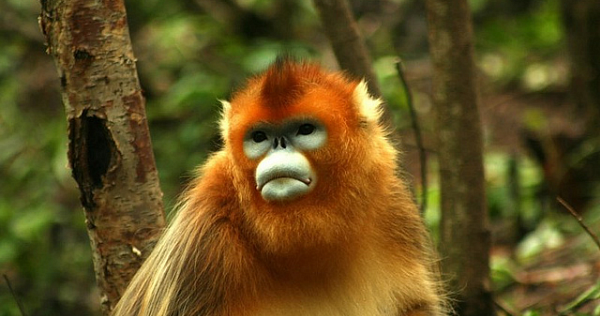While the Bornean Bay Cat remains one of the most mysterious of all feline species, recently discovered rhinopithecus strykeri fotos bring us a new insight into this elusive species. In this blog article, we will explore the details uncovered in these rare photos and the impact they have on our understanding of the Bornean Bay Cat.
Introduction to the Mysterious Bornean Bay Cat
The Bornean bay cat is a little-known feline that inhabits the island of Borneo. Although its existence has been known to science since the early 1900s, very little is known about this elusive cat. In recent years, however, there have been several sightings of the Bornean bay cat, and some spectacular Rhinopithecus strykeri fotos have been taken of this rare animal.
The Bornean bay cat is a small to medium-sized cat with a reddish brown coat and black stripes. It has a long tail and small ears, and its eyes are said to be very striking. The Bornean bay cat is thought to be a solitary creature, and very little is known about its habits or ecology.
There are fewer than 100 Bornean bay cats thought to exist in the wild, making it one of the rarest cats in the world. If you’re lucky enough to see one of these elusive felines, you’ll be sure to remember it for a lifetime!
Overview of Rhinopithecus Strykeri Fotos
The Bornean bay cat (Rhinopithecus strykeri fotos), also called the Borneo bay cat and the king cat, is a wild cat endemic to the island of Borneo. It was first described by British naturalist Alfred Russel Wallace in 1855. The Bornean bay cat is the smallest member of the genus Rhinopithecus, reaching a head-to-body length of just 50 cm (20 in). The short fur is reddish brown or greyish brown, and is marked with black spots and streaks.
The Bornean bay cat is a reclusive animal, residing in remote, dense forests far from human settlements. Very little is known about its ecology or behaviour. camera trapping surveys have suggested that the species is rare and restricted to primary forests. The IUCN Red List lists the Bornean bay cat as “Data Deficient”, due to a lack of information on its abundance and habitat requirements.
The Natural Habitat, Characteristics and Behaviors of Rhinopithecus Strykeri
Rhinopithecus strykeri, also known as the Bornean bay cat, is a small wild cat endemic to the island of Borneo. As its name suggests, this feline prefers to live in forest habitats near swamps and rivers. It is a solitary creature that is mainly active at night.
The Bornean bay cat has a reddish-brown coat with dark spots and stripes. Its head is relatively small with long tufts of black hair on its ears. It has a long tail that is also black with stripes. This cat is about the size of a domestic housecat, weighing only 4-5 kg.
Not much is known about the behavior of the Bornean bay cat since it is so elusive and rare. However, it is thought to be a nocturnal hunter that preys on rodents, birds, and reptiles. It spends most of its time in trees, where it climbs and leaps effortlessly.
The Bornean bay cat is an endangered species due to habitat loss and hunting pressure from humans. Although little research has been done on this creature, conservation efforts are underway to protect it from extinction.
An Analysis of Tarakus, a Bornean Bay Cat Captured Through Spectacular Fotos
Tarakus is a beautiful Bornean bay cat that was captured through some spectacular fotos. The photographer did an amazing job of capturing the features of this cat, and the fotos reveal many details about its appearance and behavior.
First, Tarakus has a very unique coat. The base color is black, but it has numerous white spots and stripes that make it stand out in any crowd. This coat helps it to blend in with its surroundings and makes it difficult for predators to spot.
Second, Tarakus is a very agile cat. It is able to climb trees and jump great distances. This allows it to escape from danger and catch its prey.
Third, Tarakus is a very curious cat. It is constantly exploring its surroundings and trying to figure out what is going on. This can be seen in the fotos as it investigates the camera and seems to be asking questions.
Overall, the fotos of Tarakus reveal a detailed look at this mysterious Bornean bay cat. They show us its unique features and behaviors that make it such an interesting creature.
Close Encounters: Capturing Unique Rhinopithecus Strykeri Images
The images of the Rhinopithecus strykeri, popularly known as the Bornean bay cat, are incredibly unique. These cats are incredibly elusive and shy, making them difficult to photograph in the wild. However, by following these tips, you can get close enough to capture some amazing shots of these beautiful creatures.
First, it’s important to know where to find them. The Bornean bay cat is found only on the island of Borneo, in Indonesia. They typically inhabit dense forests and are most active at dawn and dusk.
Second, use a telephoto lens when photographing the Bornean bay cat. These cats are very shy and will likely run away if they see you coming. A telephoto lens will allow you to get close enough for some great shots without disturbing the cat.
Third, be patient. It can take some time for the Bornean bay cat to come out of hiding and show itself. If you’re patient and wait quietly, you’ll eventually be rewarded with some spectacular views of this beautiful animal.
Conservation Efforts for the
Since the mid-twentieth century, the Bornean bay cat has been recognised as a distinct species and conservation efforts have been underway to protect this unique animal. The World Wildlife Fund (WWF) has been working to conserve the habitat of the Bornean bay cat and other threatened species in the region. In 2003, the WWF helped establish the Sabah Forestry Department’s Wildlife Conservation Division, which is responsible for managing and conserving protected areas in Sabah. The division has since implemented a number of conservation initiatives, including the establishment of several wildlife sanctuaries.
In addition to conservation efforts by NGOs, the Malaysian government has also enacted laws to protect the Bornean bay cat. In 2007, the State Government of Sabah declared the Tabin Wildlife Reserve a wildlife sanctuary, off-limits to development or human activity. This reserve is home to some of the last remaining intact lowland forest in Southeast Asia and is an important refuge for many endangered species, including the Bornean bay cat.


































Leave a Reply